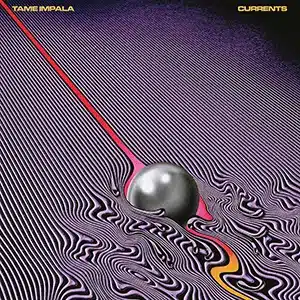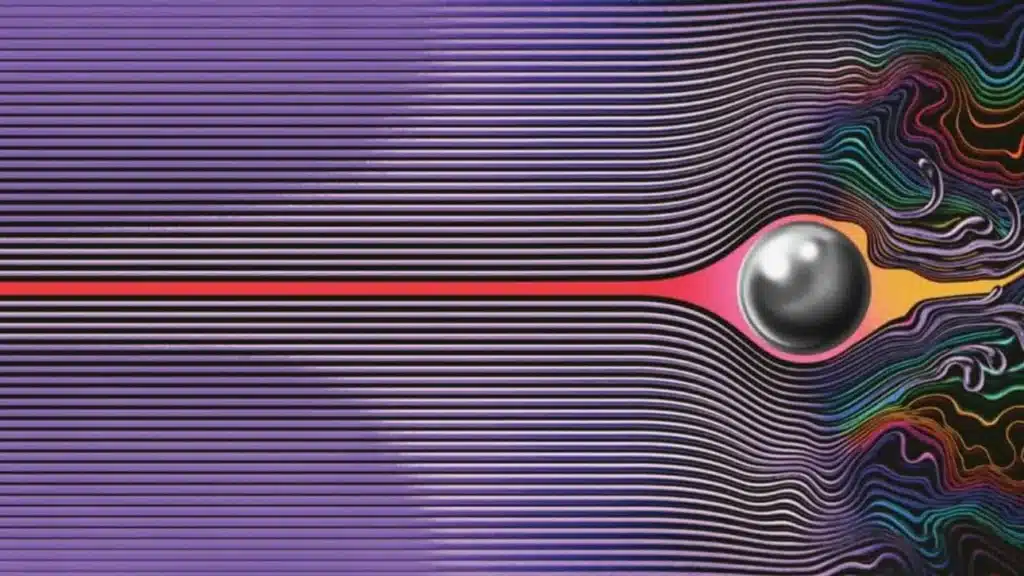
The “gigantic, derelict, empty, silent monolith” sparked Tame Impala’s imagination while composing one of the most memorable albums of the 2010s.
 Currents Tame Impala Modular 17 July 2015
Currents Tame Impala Modular 17 July 2015
It was a “gigantic, derelict, empty, silent monolith” that sparked Australian multi-instrumentalist Kevin Parker’s imagination while composing one of the most memorable albums of the 2010s. Recently, Tame Impala’s acclaimed Currents turned ten. PopMatters celebrated Currents as a “pure alliance of vintage and modern sounds, psychedelic and dance sensibilities”. Rolling Stone has enshrined it on their “500 Greatest Albums of All Time” list. Rihanna covered the closing track.
Currents carried Kevin Parker from his Tame Impala project’s earlier psych-rock efforts into the mellow waters of R&B, swoony funk numbers, and electronic dance hits, making male emotional intelligence seem cool. Later mainstream pop hits, such as the Weeknd‘s “Blinding Lights”, Taylor Swift‘s “Anti-Hero”, and Djo’s “End of Beginning” (heavily Tame-coded), as well as MGMT‘s Little Dark Age (2018), championed similar glamorous, retro-futuristic characteristics as Currents.

Currents redefined Kevin Parker’s career as much as it sent ripples across the modern pop landscape. Who was this long-haired Aussie loner who’d single-handedly composed a hit album fusing mind-bending psychedelia with chart-ready hooks? If introverts could now be superstars and pop artists could communicate insightfully without funneling their thoughts through banal corporate filters, what couldn’t be achieved?
Crafting this multi-ARIA award-winning collection required inspiring material. Not widely discussed is this unsung hero mentioned in the 2017 Currents Collectors Edition vinyl box set: a decaying monstrosity that influenced Kevin Parker’s creative process.
Enter the South Fremantle Power Station. A monument to bygone times, its battered and graffitied faces, rows of ruined windows, and rusted barbed wire lend the industrial stone corpse an eerie personality. Though it hasn’t offered power since 1985, the station, now a gutted sentinel kneeling lifelessly on Australia’s North Coogee shore, was once the largest in Western Australia. A competing energy provider eventually rendered the South Fremantle Power Station uneconomic, forcing its closure.
However, the public never entirely forgot it. Today, the disused complex draws onlookers mesmerized by its hulking skeleton and harrowing emptiness. Intrepid artists have made it their personal playground. Kevin Parker drew on his preternatural energy while songwriting for his biggest album yet. At once haggard and dignified, such a structure seems a likely inspiration for an intuitive artist like Parker. He appreciated it so much that he dedicated an entire zine passage to it in the Currents Collector’s Edition.
“There’s something about its size and perpetual stillness that makes me feel alive,” Parker shared about the station, adding that it was a mere twenty-minute walk from his home (Parker). “The night after the first time I came across it, I lay awake thinking about it… I’d come with my notebook and headphones and just sit there next to it, usually to write lyrics, but sometimes not even, I just liked being there.” In the zine, Parker described the power station as “this gigantic, derelict, empty, silent monolith.”
Discovering the power station marked a critical juncture in Parker’s album development process. While he’d already considered titling his record Currents, the station’s “intoxicating, addictive” presence helped solidify this moniker. However, its effects extended beyond names.
“The Moment”, Currents‘ third track, was a byproduct of Parker’s visits. Parker explained that the song’s “synth-guitar breakdown was directly inspired by standing at [the power station’s] base looking up at it.” The chorus, “It’s getting closer”, refers to Parker’s approaches to the station and the way he felt as it grew nearer on the horizon.
“Powerlines”, a Currents B-side track, echoes a similar sense of industrial mystery. It crackles with feeling, like a thunderstorm gathering above some empty Midwestern field at twilight. One senses they’ve been transported to a place both fantastical and achingly familiar when enveloped in walls of pulsing, whirring synths that, appropriately, mimic the sounds of electricity. An atmospheric piece, the instrumental slow-burn probably owes at least partial inspiration to Parker’s beloved South Fremantle Station.
While it might be easier to imagine conventionally beautiful, aesthetically pleasing spaces as beacons of creative inspiration, a work as introspective as Currents likely required a different environment. Parker’s gift isn’t locked within a set of crumbling walls, but the wondrously weird qualities of Currents, such as its spaciousness, texture, depth, emotional complexity, and poignance, mirror the haunting gravitas of something broken and abandoned. It is these qualities that made Currents a necessary album ten years ago and now.
Other music groups, like Pond—Parker’s friends for whom he has also produced—almost certainly filmed parts of their “Colder Than Ice” video from 2017’s The Weather at the station. As its walls of art and graffiti reveal, the old structure is a muse for visual creatives as well.
With the City of Cockburn declaring the South Fremantle Power Station’s fate to be “continued deterioration” unless it achieves “useful tenancy”, the aging edifice occupies a perpetual liminal space. Not quite dead but far from alive, it is the picture of time’s relentless march and humans’ reluctance to impose change or fully let go. In that sense, perhaps it’s more symbolic than even a Tame Impala album can reflect.


